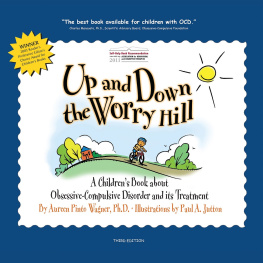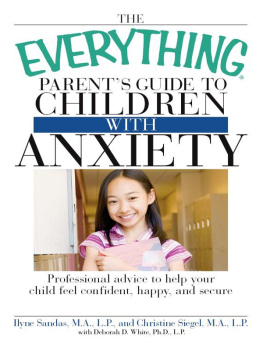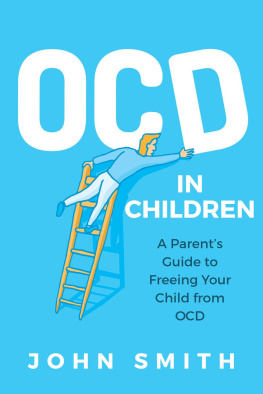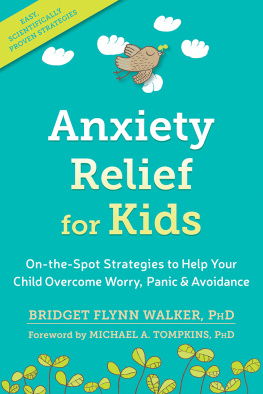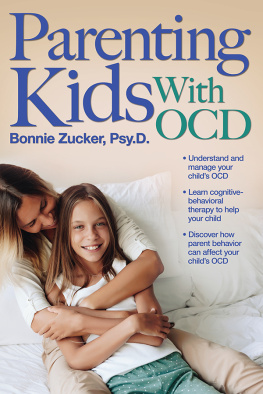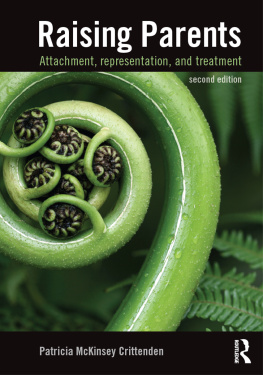The information and techniques offered in this book should not be used as a replacement for guidance, consultation, assessment or treatment by a qualified mental health professional.
First edition 2000
Second edition 2004
Third edition 2013
Library of Congress Control Number: 2004092498
Copyright 2000-2013 by Lighthouse Press, Inc.
All rights reserved. No part of this book may be reproduced by any process whatsoever without the written permission of the copyright owner.
Published by Lighthouse Press, Inc.
www.Lighthouse-Press.com
ISBN-13: 979-8-9859383-2-6
WORRY HILL Registered in the U.S. Patent and Trademark office.
A previous format of this book had the following ISBN-13: 978-0-9795392-5-1
A previous edition of this book has been cataloged as follows:
Publishers Cataloging-in-Publication
Wagner, Aureen Pinto
Up and Down the worry hill: a childrens book about obsessive-compulsive disorder and its treatment / by Aureen Pinto Wagner; illustrations by Paul A. Jutton. -- 2nd ed
p.cm.
SUMMARY: Examination of compulsive behavior emphasizes that many people have this disorder and discusses its causes, effects, and treatment options.
Audience: Ages 4-14.
LCCN 2004092498
ISBN-10: 0-9677347-6-2
ISBN-13: 978-0-9677347-6-7
1. Obsessive-compulsive disorder in children--Juvenile literature. 2. Obsessive-compulsive disorder. I. Jutton, Paul A., ill. II. Title.
RJ506.O25W34 2004 618.92'85227 QBI33-2026
t o all the courageous children who have taught me about

the struggles and victories of being a child with OCD.

With thanks to my husband, who first inspired me to write this book,

and with whose continued support this book was made possible,

to our children, and to my parents and family

for their love and confidence in me through the years.

Preface for Parents and Professionals
W hen children experience obsessions and compulsions, they are often scared, confused, ashamed, and defensive, as they cannot explain their uncontrollable worries and senseless rituals. Up and Down the Worry Hill is written to dispel their fears and uncertainties. Children need to know that they are not alone and that neither they nor their parents are to blame. They need to know that help is available and that they can have a significant impact on their own treatment and recovery.
In the course of my experience in treating Obsessive-Compulsive Disorder (OCD), I developed a child-friendly approach to convey these messages to youngsters. Many parents asked me to write a book, so that other families could benefit from the same understanding of this beguiling illness.
Up and Down the Worry Hill describes OCD from a childs perspective. It provides accurate information about OCD and offers parents, educators and clinicians the chance to engage in an open discussion of a baffling illness. It attempts to give children with OCD a sense of control and hope. Hope and optimism are critical in building the readiness and persistence that it takes to gain mastery over OCD.
Most importantly, Up and Down the Worry Hill helps children prepare to engage in treatment. It describes cognitive-behavioral therapy (CBT), a highly effective treatment for OCD, in a manner that children can comprehend. This book uses real-life metaphors to describe the concepts of CBT. Metaphors simplify difficult and abstract concepts by comparing them to situations that children can easily understand. The metaphor of the Worry Hill evolved over the years in my work with children with OCD. Children and adults have responded very favorably to it.
The first edition of Up and Down the Worry Hill, published in 2000, received an overwhelming response. This third edition builds on previous editions, with more comprehensive coverage of the concepts, process and steps involved in CBT and recovery.
To make the best use of this book, read and discuss this story several times with your child. Repeated readings will help your child absorb and integrate the many complexities of OCD and CBT gradually. Young children may benefit from having segments of the book read to them at different times. Reading this book to siblings and classmates of children with OCD may help them be more empathic and supportive.
This book has two companion books that capitalize on the synergy of the parent-child-therapist team in conquering OCD. What to do when your Child has Obsessive-Compulsive Disorder: Strategies and Solutions offers parents and educators step-by-step practical guidance in helping children triumph over OCD. Treatment of OCD in Children and Adolescents: Professionals Kit provides therapists with in-depth description of the Four-Phase Worry Hill treatment approach and specific protocols for effectively treating various forms of OCD. Information on these companion books is available at the back of this book.
May your ride Up and Down the Worry Hill be victorious!

Aureen P. Wagner, Ph.D.


C asey woke up and rubbed his eyes. It was a bright and sunny day.
He was happy and wanted to ride the new bicycle his parents gave him. He had been practicing everyday and could ride it quite well.
Caseys dad had promised that he would teach Casey how to ride up the Big Hill at the end of the street and then coast down it. Casey had been waiting to do that for a long time. Today was the day
Casey sat up in bed. He picked up Teddy and touched him four times. Then he got out of bed carefully, with one foot first, then the other.
He patted his pillow four times and tucked his sheets all around it.
Casey smiled. It feels just right. Now Ill have a perfect day.

Mom, Im up! I really want to ride my new bike.
Come on down, Casey, replied his mother. Dad and Jenny are up too. Its time for breakfast, and then off to school you go. You can ride your bike when you get home from school in the afternoon.
Casey started to get dressed for school. He put on his special pants. They felt right. Then he picked out the socks that felt good on his toes. He had many other pairs of socks but the bumps on the seams bothered his feet.

